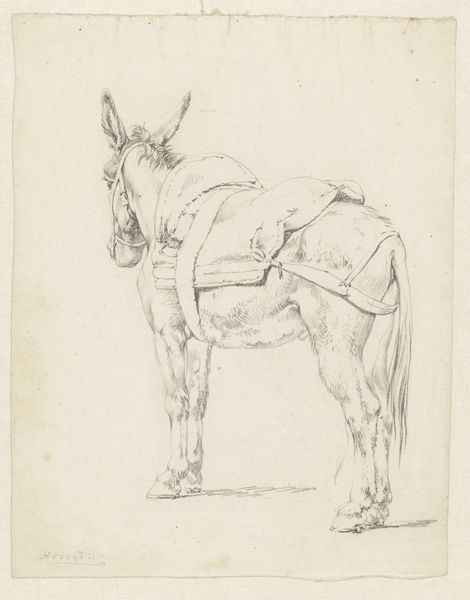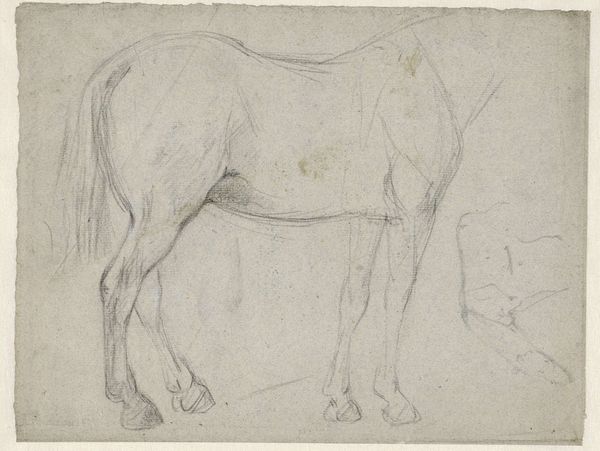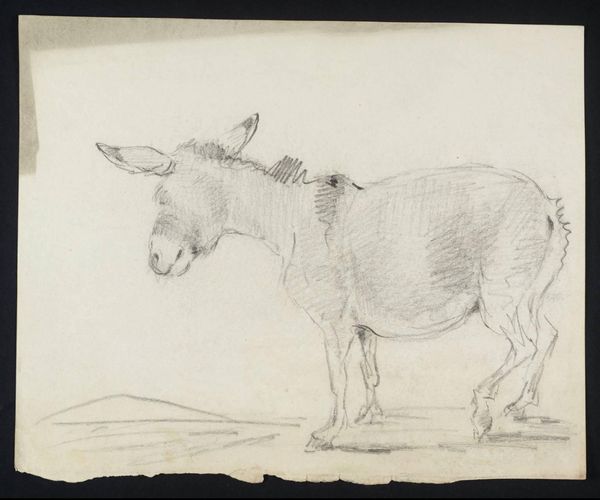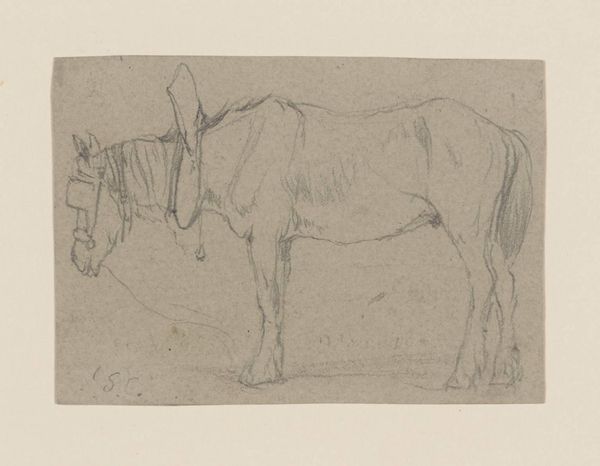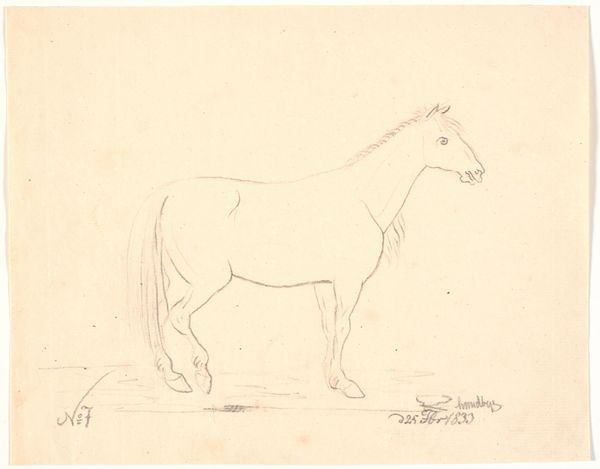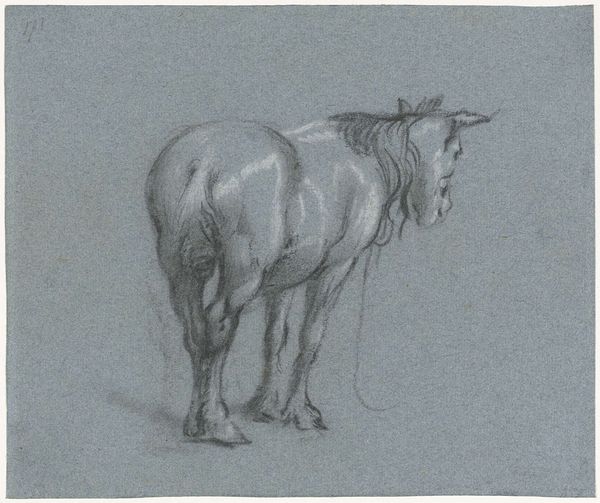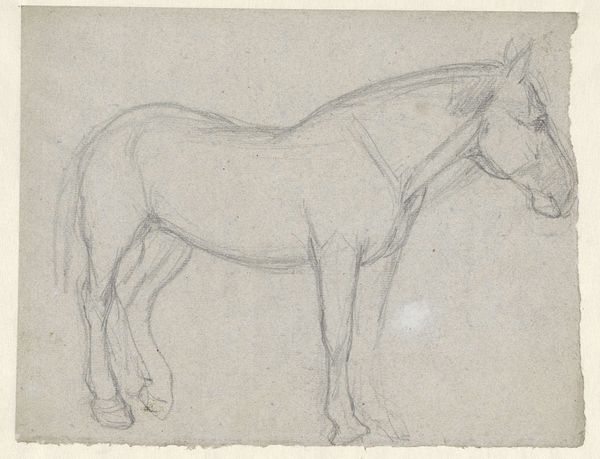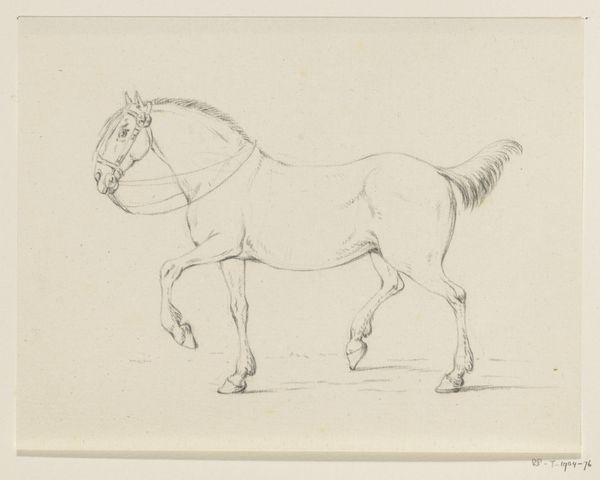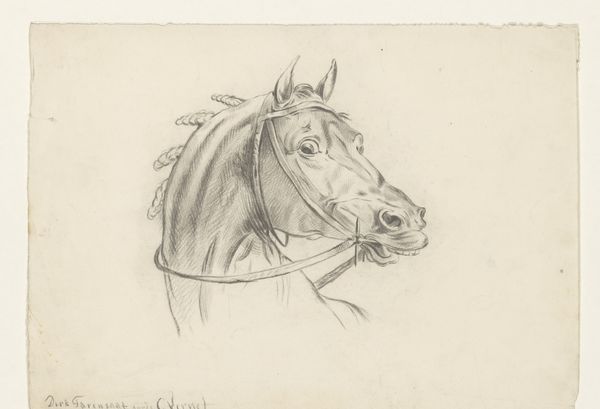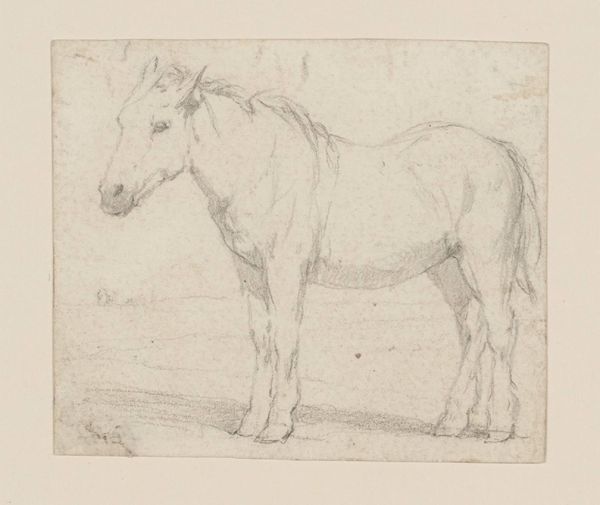
drawing, paper, pencil
#
drawing
#
amateur sketch
#
light pencil work
#
quirky sketch
#
pencil sketch
#
incomplete sketchy
#
landscape
#
paper
#
personal sketchbook
#
idea generation sketch
#
ink drawing experimentation
#
pencil
#
sketchbook drawing
#
genre-painting
#
realism
#
initial sketch
Dimensions: height 105 mm, width 157 mm
Copyright: Rijks Museum: Open Domain
Editor: This is Johannes Bosboom’s “Beladen ezel,” made sometime between 1827 and 1891. It’s a pencil drawing on paper, currently held at the Rijksmuseum. It feels very simple and raw. What strikes you about it? Curator: For me, the beauty here resides in the exploration of labor. Bosboom, through the humbleness of pencil on paper, directs our attention to the working animal. The sketchiness, the incompleteness, they emphasize process over polish. We’re witnessing a moment of observation, a meditation on the donkey's material reality as a beast of burden. What kind of load is the animal carrying, and for whom? What does its day look like, its life under human demands? Editor: So you’re seeing the donkey as a symbol of labor, of a kind of raw exchange? I hadn't really considered that, I was just focused on the loose drawing style. Curator: Exactly. Think about the paper itself: How was it made, what was its cost, who had access to such materials? Even the pencil, a relatively accessible medium, speaks to a certain level of industrialized production and its reach. Was Bosboom thinking about the material circumstances that made this drawing possible, or was he only considering the final sketch? The art is as much about the social context of its making as it is about the subject. The materiality of the drawing—paper, pencil—and its depiction of a working animal prompt us to reflect on human-animal relationships and the economics embedded within them. Editor: That makes me rethink the "simplicity" I saw at first. I didn't consider how many layers of labor and material went into even what looks like a quick sketch. Thanks! Curator: And thanks to you - your initial reaction opened up this dialogue, revealing how even the seemingly simple image reveals the dense realities of production and consumption that form its basis.
Comments
No comments
Be the first to comment and join the conversation on the ultimate creative platform.
